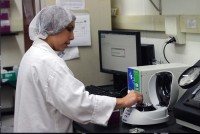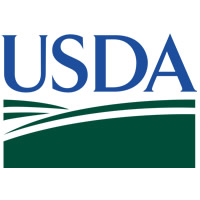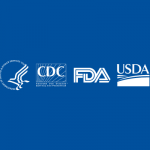There is growing evidence that a strong environmental program is critical to identifying potential issues before they threaten product. This data must be captured regularly based on a robust environmental sampling plan and then analyzed in order to take advantage of the results. However, without the proper tools, this is challenging, time consuming and ineffective.
How Software Strengthens a Sampling Program
The most critical component of an environmental sampling plan is zone coverage. Many sampling plans exclude zone 1, direct food contact, because this implicates the finished product and may lead to a test-and-hold situation. However, at minimum, zones 2-4 should be covered in a sampling plan. In addition, it is important to randomize test points and schedules. Sanitation crews are held to rigorous standards, but it is human nature to complete repetitive tasks in the same manner. By randomizing which test points are tested—by day, time and operator—quality teams are more likely to identify potential areas of concern. Randomization is a challenging task to complete manually but a routine task for software.

In addition, ensuring test-point coverage is a key component to sampling plans. An interval for test-point coverage is typically included in environmental sampling plans. It is up to quality teams to ensure that their sampling programs are consistent with these business rules. When this is tracked in an Excel spreadsheet, randomization is typically sacrificed to ensure test-point coverage. This is tracked in a large table with dates on one axis and test points on the other. The challenges to this approach include randomization, analysis and management of more than one test-point coverage interval. Business rules of this nature can be easily managed through software algorithms. In fact, the task of creating a schedule according to a series of business rules is not unlike a macro.
Lastly, robust sampling programs include detailed remediation and response plans in the event of a positive or presumed positive test result. The details on these plans are reviewed internally to ensure that the issues have been adequately addressed. Documentation that each step has been completed in a timely manner is absolutely essential in today’s regulated food production environment. Remediation records may be requested in a government or supplier food safety audit. Emails, meeting notes, pictures and cleaning records can certainly be kept in file drawers, but the more accessible this information is, the more likely it will be used. Approval processes and business workflows have been automated in a variety of software tools. Everything from sales to expense reports has sought support from software to ensure that their workflows are executed consistently and with traceability. Software can support food safety efforts in this way as well.
Dos and Don’ts of Data Analysis
The next challenge in environmental monitoring is the volume of data generated and the tools required for effective analysis. A robust environmental sampling program for Listeria can range from 10 to 15 samples per week per line—often much more. Each test result includes metadata such as sample location, day and time, sample collector and result. In a plant with 10 lines, there are 150 test results per week, or 7,800 test results per year. When compiling results for the past three years, the numbers reach nearly a quarter of million just for pathogen testing. Routine testing such as yeast, mold and Enterobacteriaceae should also be considered in the analysis. The sheer volume of the data can be challenging in a spreadsheet but routine in a database.
Don’t rely on unmanageable spreadsheets. Analysis should look for trends in the data as well as compliance to the program. Completing this task in spreadsheets requires that the data be properly formatted. Further, the database-like structure that would enable analysis is often inconsistent with the table format used for sample schedule generation. In addition, this task is time consuming, manual and error prone; therefore, the frequency of analysis may be reduced.
Don’t take an analog approach to floor plans and risk it being outdated. Particularly for environmental data, it is important to understand the proximity of test points and their results. This allows managers to look for patterns or workflow trends that may be impacting results. This task typically requires mapping the test points and their results to a floor plan. Many plants keep a copy of the floor plan and recent findings posted on the wall.
Do use the tools available. In today’s data-rich food production environment, successful data analysis must be automated.
Answering the Call for Communication
Lastly, for an environmental monitoring program to be effective, communication is critical. The members of the quality team need to know what specific tasks are expected of each of them and when. Sanitation workers need to know what areas require their timely response. Executives need visibility into the results and actions underway so that they can support their teams and make critical food safety decisions. While these tasks can be completed manually, it is ripe for automation and new tools are streamlining the communication process.
Food safety managers and quality teams are working diligently with their sanitation teams to keep their plants and product safe. However, they need to leverage the available tools needed to do their jobs efficiently and effectively. New software tools designed for the food safety industry are changing the way the industry handles safety initiatives. In particular, sampling program, data analysis and communication tools are ripe for automation. Take advantage of technologies and tools already in use in business today so you are prepared to manage the food safety challenges of tomorrow.







